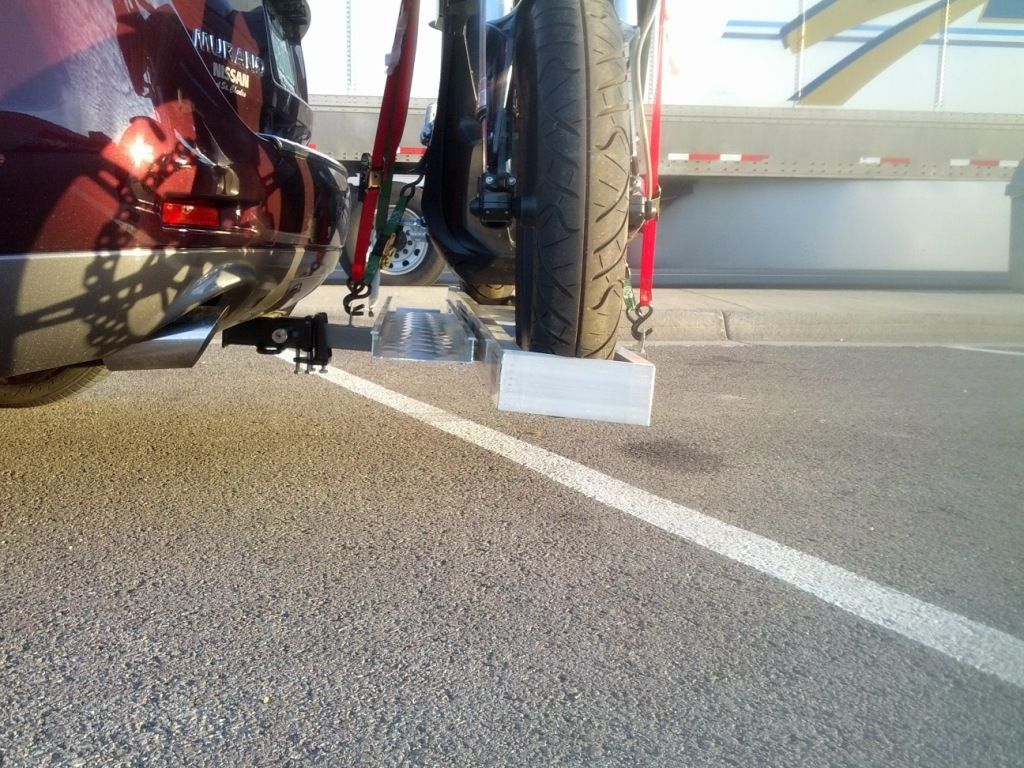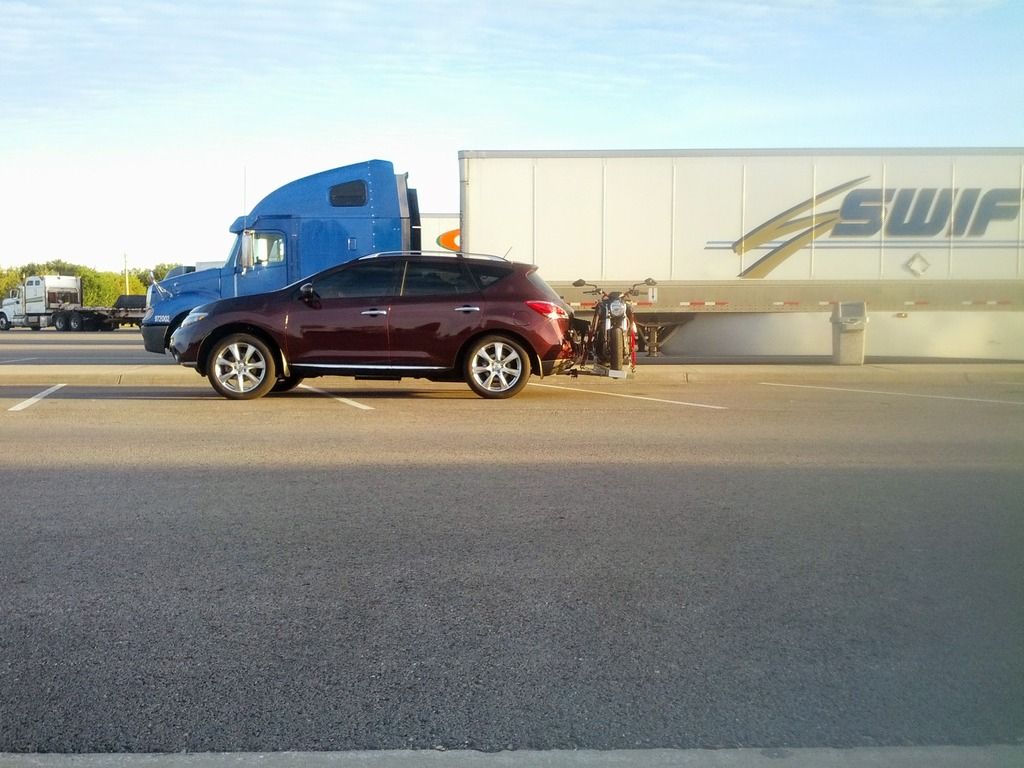I have hauled my 2014 Zero S using this type of hitch. Here are a few notes.
1. I found aluminum and steel construction. Obviously steele can carry more but it also weighs more. I found an aluminum carrier that could carry 400lbs (curb weight on 2014 Zero S is 399lbs).
2. Verify the total tongue capacity of the tow vehicle. Tow capacity is how much you can pull. Tongue capacity is how much weight you can have on the hitch. Since this isn't a trailer all the weight of the bike PLUS the weight of the carrier is on the hitch. The tongue capacity of the vehicle needs to exceed the weight of the bike plus the carrier. I found an aluminum carrier that weighed 34lbs as opposed to steel which all weighed about 100lbs. So for me I needed a tongue capacity of 433lbs. My car only had a tongue capacity of 350lbs

I was over but used it anyway under the assumption that it was bad for the suspension and tires and I might notice vehicle handling affects but that the bike was not going to fall off the back of the vehicle.
3. Be prepared to watch the bike shake...a lot. As the bike rocks back and forth you are going to keep thinking its going to twist off....every bump....every turn....every gust of wind. I only used it once because of this. I still have it but I would only use it as a last resort. Also, I don't have a car anymore but that's beside the point.
4. Getting the bike on is really easy because the electric drive makes it a breeze to walk it up the ramp and use the electric motor to assist.
5. Getting the bike off was a pain unless you buy a carrier that lets you roll forward to get off. Pulling the bike backwards off the carrier with the rear wheel lowered into the last rung was a pain. The second time (on the same trip) I pulled the bike back a bit to get the ramp under the front tire so I could drive off forwards...worked much better once I got the ramp under the front tire but getting it under the tire wasn't easy since I was doing it all myself. It wouldn't be that bad with another person. However, If I was planning to use it again I would just create a spot to latch the ramp to the other side so I could drive on and then drive off just by putting the ramp on one side or the other....without having to roll the bike back a little to get it under the front tire for driving off.
6. As someone else mentioned you need to watch the straps on the tank. I would actually recommend just taking the tank off for the trip.
7. Don't run straps through the lower hole where the swing arm connects to the frame. The straps will get cut by the edge of the hole/swing arm. I think you actually need a little bit of flex between the carrier and the attach points on the bike. Front connections have a little play because of front shock. After I cut one strap using the swing arm hole I used loops on the frame which got a little flex from the rear shock.
8. Stop to check the tension on the straps...a lot....it seems like every time I stopped I could go back and tighten it down some more as things kept shifting and settling. The fact that I was checking it so often is the reason I found out the rear strap going through the swing arm hole had been cut.
9. When I was using mine I scraped the tail end of the carrier on the ground when going down a slant onto level ground (like out of a steep driveway onto a street that is level). I could avoid it by going in/out at an angle. You can see that my Nissan Murano was pretty weighed down carrying the Zero. If I put some stiffer shocks in the back to even things out it would have helped but I think I still would have had to be careful not to scrape.
10. Make sure to relieve the pressure from the shocks using the little screw at the top when you take the bike off the carrier.




 Author
Topic: DS/DSR truck bumper hauler (Read 2348 times)
Author
Topic: DS/DSR truck bumper hauler (Read 2348 times)
